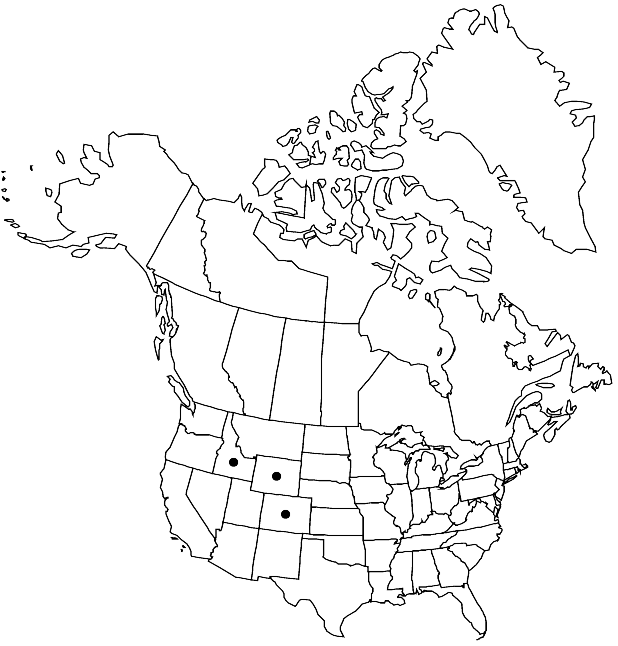Lepidium paysonii
Cruciferae Continental N. Amer., 577. 1993.
Perennials; (caudex woody, to 6 mm diam.); densely puberulent. Stems several from base (caudex), erect or ascending to decumbent, branched distally, 0.5–2.3 dm. Basal leaves not rosulate; petiole 1–2.5 cm; blade oblanceolate (rarely with 1 or 2 lateral lobes), 1–3.5 cm × 3–7 mm, margins serrate-dentate. Cauline leaves shortly petiolate or sessile; blade narrowly oblanceolate to linear, 0.7–3.5 cm × 1–4 mm, base attenuate, not auriculate, margins entire or distally serrulate. Racemes elongated in fruit; rachis puberulent, trichomes curved, cylindrical. Fruiting pedicels divaricate to horizontal, slightly recurved, (terete), 2–4(–5.5) × 0.15–0.2 mm, densely puberulent throughout. Flowers: sepals oblong, 0.6–0.9 × 0.3–0.4 mm; petals (absent or rudimentary), white, oblanceolate, 0.3–0.6 × 0.1–0.2 mm, claw absent; stamens 2, median; filaments 0.6–0.7 mm; anthers 0.1–0.2 mm. Fruits elliptic, 2.4–2.8 × 1.6–2 mm, apically winged, apical notch 0.2–0.3 mm deep; valves thin, smooth, not veined, puberulent (at least along margin); style obsolete or to 0.1 mm, included in apical notch. Seeds oblong, 1.3–1.4 × 0.7–0.8 mm.
Phenology: Flowering Jun–Jul.
Habitat: Dry open woods, dry grounds
Distribution

Colo., Idaho, Wyo.
Discussion
Lepidium paysonii is known in Idaho from Bear Lake County, and in Wyoming from Park and Sublette counties.
Placing Lepidium paysonii in the synonymy of L. densiflorum var. pubicarpum, N. H. Holmgren (2005b) depended on the presence in both taxa of minute papillae at the fruit valve margin. However, L. paysonii is a perennial with elliptic fruits widest at the middle, curved rachis trichomes, and fruiting pedicels puberulent throughout. By contrast, L. densiflorum is a biennial or annual with obovate fruits widest beyond the middle, straight rachis trichomes, and fruiting pedicels usually puberulent adaxially, rarely glabrate; in our opinion, the two species are not closely related.
Selected References
None.